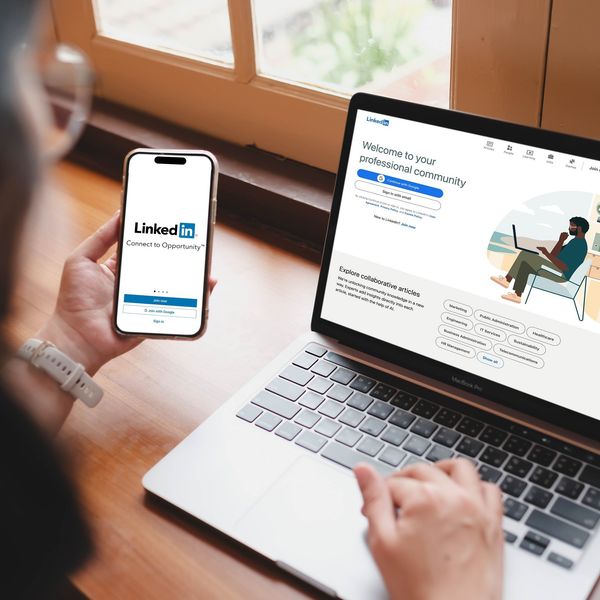
Why Simply Being On Social Media Isn't Enough
These days, everyone from your dentist to your favorite brew pub is using social media. If you haven’t jumped on the bandwagon as of yet, you may think the fact that “everyone is doing it” is reason enough.
I caution you to think twice before embarking on this long journey.
It isn’t to say I’m anti-social media. In fact, I’m a firm believer in businesses using it to expand their reach. But that being said, I also believe you need to use it for the right reasons, and in the right way, otherwise you won’t see the results you want.
What’s Wrong with Social Media
Or rather, what’s wrong with businesses using social; too many businesses think getting on Twitter will net them millions overnight in sales, and that’s simply not realistic. Or they set up a Facebook account and update it once a year, then scratch their heads, wondering why no one is following them.
Social media is more than a single to-do to check off your list. It’s like a child; you’ve got to continually nurture it and pay attention to it, otherwise it withers up and dies.
If You’re There, Go All In
Maybe you simply aren’t aware of everything that should go into a fully-developed social strategy. That’s reason enough to hesitate and do some research before you dive in. Before you create a Google+ or Twitter account, make sure you understand what you’ll need to do for the bigger goals, which are to expand your reach, build relationships, and find new customers.
1. Figure Out Your Strategy. This is your raison d'être on social media. Simply having a presence is not a strategy. You need to determine:
- Who your target buyers are
- Where they spend time socially
- What questions they have during the buying process
- The types of information they’re looking for online during the process
If, for example, you sell to other businesses, they’re less likely to be spending time on Tumblr than they are LinkedIn. So it’s important to focus your social efforts on the right channels.
You’ll also need to determine who will manage your social efforts. If you’re a small business, that might be you, the owner. Or you might have a marketing person who can take it on. The important thing is to identify the resource(s) you need on an ongoing basis to manage your social media activities. You can’t just set it up and forget it.
2. Establish Your Home Base. You should have a website with a blog where you can drive traffic from social media. After all, just getting new followers is not your goal, right? Ultimately, you want more sales and brand loyalty. Social media platforms like Twitter and Pinterest can help you improve your reach, platforms like Facebook help you engage with your prospects and customers, but to get them to buy from you, you want to drive them back to your website where they can explore more of your fantastic content, learn more about you and then click on Buy Now, View Demo or Contact Us.
3. Use Analytics. Analytics, such as Google Analytics or HubSpot, helps you track which links people are clicking on. If you use Analytics (and you should), you can easily see which of your blog posts people are clicking on from social shares. Second, it helps you better understand your audience. Maybe you wrote what you think is a killer blog post, but no one has clicked on it from your many shares through social media. Your followers are, however, clicking the heck out of a post you wrote a few years ago. Now you know what your audience cares about and can create more content around that topic.
4. Blog About What Your Audience Cares About. Using that information you gleaned in step one about your target audience, you can start crafting content that your market wants to read, as well as what they’re clicking on in step three. The better you can write to your audience, the more you’ll build your blog (and website) traffic.
5. Share the Posts Through Social Media. A blog by itself won’t grow readership nearly as quickly as it will with a little social boost. For every post you write, share it on your various social sites. Craft engaging updates with those links to entice your followers to click to read your content. Vary up what you write for each social channel. You want to provide value for people following you on each site and not simply cut and paste what you share on Twitter over on LinkedIn.
And when you have special offers, such as coupons or sales, share that too. You don’t want to bombard your audience with promotions, but a healthy mix of special offers, content (yours and others’), and company news will keep people engaged and coming back for more.
6. Close the Sale. According to McKinsey & Company,
E-mail remains a significantly more effective way to acquire customers than social media—nearly 40 times that of Facebook and Twitter combined. That’s because 91 percent of all US consumers still use e-mail daily, and the rate at which e-mails prompt purchases is not only estimated to be at least three times that of social media, but the average order value is also 17 percent higher.
What does that mean for you? Again, social media alone is not enough. Email marketing is a fantastic way to help move prospects you captured on social through your pipeline. Once your social posts drive the traffic to your site, you need to offer people something of value (a discount, a whitepaper, a how-to guide, etc.) in exchange for their email. Now that you have their email addresses, you can begin to communicate with them via email marketing. Email is where the money is. With email, you provide value, build trust and stay on top of their mind. Your prospect may not be ready to purchase yet, but when they are, you will be the one that has stayed in touch with and provided them valuable content through email.
7. Don’t Forget Your Other Marketing Tools. Press releases, advertising, email, and whatever else you’re doing should complement what you’re doing on social.
As you can see, online marketing isn’t as simple as just “being on social.” With a solid strategy and continual efforts to grow your reach, you’ll find that social media is a highly effective sales and marketing tool. But by itself, not so much.



